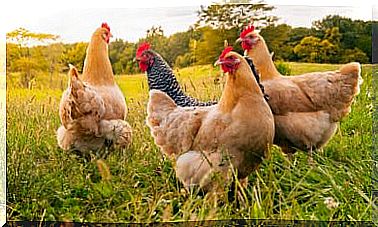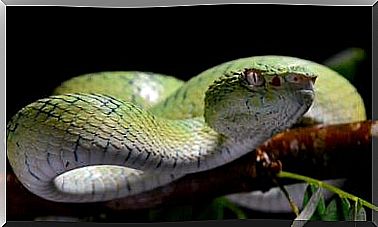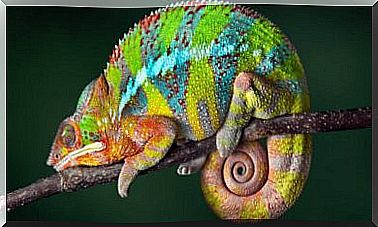What Is The Diet Of Grasshoppers?
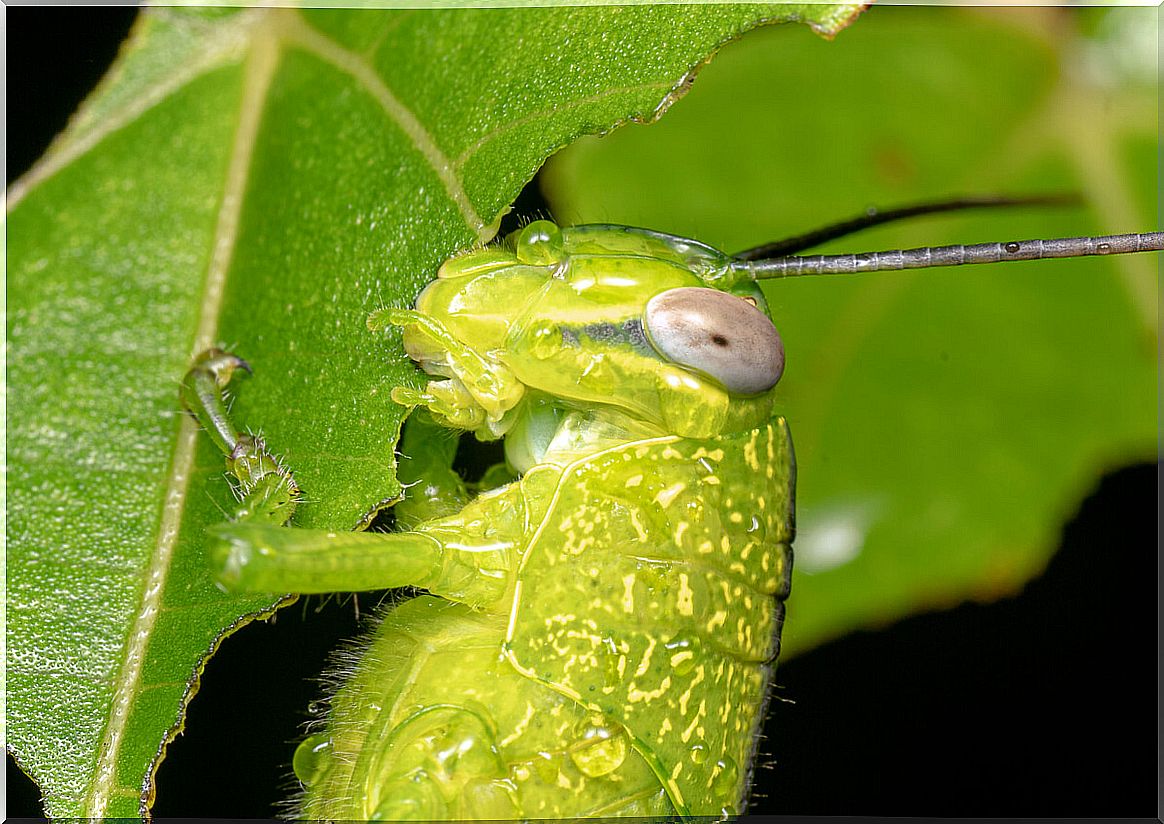
Grasshoppers are a group of insects widely distributed throughout the world. These animals belong to the Caelifera suborder , which has about 7000 species. The most representative of them are their long and strong legs, made to jump.
Although we have all seen these small invertebrates jump and fly through our gardens, many of their characteristics are unknown to the general population. For example, do you know what the grasshopper diet is?
These insects are mainly herbivorous, which is why they are recognized as crop pests, but there are many other non-harmful species that are listed as threatened within the list of the International Union for Conservation of Nature (IUCN).
A chewing mouth appliance
Within the class of insects, we can find a great diversity of specialized oral structures, in addition to atypical morphologies in other segments: wings, extremities or antennae. Depending on the shape of these structures, the different groups of insects are classified.
If we look at the mouth apparatus of insects, we can deduce what type of food makes up their diet. There are chewing, piercing or sucking devices, siphons and licks. Grasshoppers have specialized chewing jaw and maxillary structures, as do dragonflies and beetles.
This type of device is also present in the larval stage of many insects that, in their adult phase, have other types of oral devices. An example of this is the caterpillars of the butterflies, since the adults suck the nectar of the flowers through their trunks.
A chewing mouth appliance consists of three different parts:
- One pair of jaws : Grasshoppers have one pair of jaws, located behind the labrum and in front of the jaws. In chewing insects, these are the largest and strongest structures, with which they can cut and crush food. In addition to serving for eating, the jaws also play a role in defense.
- A pair of maxillae : they are segmented and located behind the jaws. With them, the grasshopper manipulates the food.
- Lip or labro : it is an odd piece that also helps in handling food. It has a square appearance in chewing insects, but it can be specialized in other different structures.
- Hypopharynx : it is a small piece, located between the jaws and behind the jaws. It intervenes in the digestion of food, since it acts as a kind of tongue that helps to mix food with saliva.

Grasshopper feeding
Grasshoppers are phytophagous animals, that is, they feed on plants. Pieces torn off leaves, galleries or tunnels, holes or destruction of plant tissue are evidence of the presence of a chewing insect such as the grasshopper.
What kind of plants does the grasshopper prefer?
As a group, grasshoppers range from monophagous eaters – they have a super-specialized diet – to polyphagous – they eat different types of food – although most species are in the oligophagous group – they have a preference for a few species of plants.
In some species, the feeding tendencies are more defined and there are grasshoppers that prefer to feed in areas of pasture and others of herbaceous perennials. But, in general, the feeding patterns of herbivorous insects are influenced by physical, chemical and climatic factors.
Choosing a diet for grasshoppers is not trivial as it can affect their survival and reproduction rates. For example, grasshoppers reared exclusively on alfalfa have very reduced fecundity and survival compared to those fed a varied diet in the laboratory.
Grasshoppers choose their diet
The choice of plants by grasshoppers is highly influenced by many different factors. Sometimes it is difficult to identify which of them is at stake in each insect community and how much it influences. Here are some of them:
- Nutrient availability.
- Nutritive properties of food plants.
- Sensory capacities of insects.
- Grasshoppers’ abilities to detoxify different plants with defensive substances.
- Competitors present in the middle.
- Mobility and dispersal capacity of the grasshopper species.
- Phylogenetic limitations.
Feeding and omnivorous grasshoppers
Although, as we have mentioned, most grasshoppers are herbivores, there are species that also feed on other small insects or animal feces and tissue.
For example, the species Melanoplus sanguinipes and Ageneotettix deorum are capable of feeding on the feces of other grasshoppers and the subfamily of grasshoppers Listroscelidinae collects predators such as the green grasshopper (T ettigonia viridissima) , which is capable of feeding on small insects or larvae. .
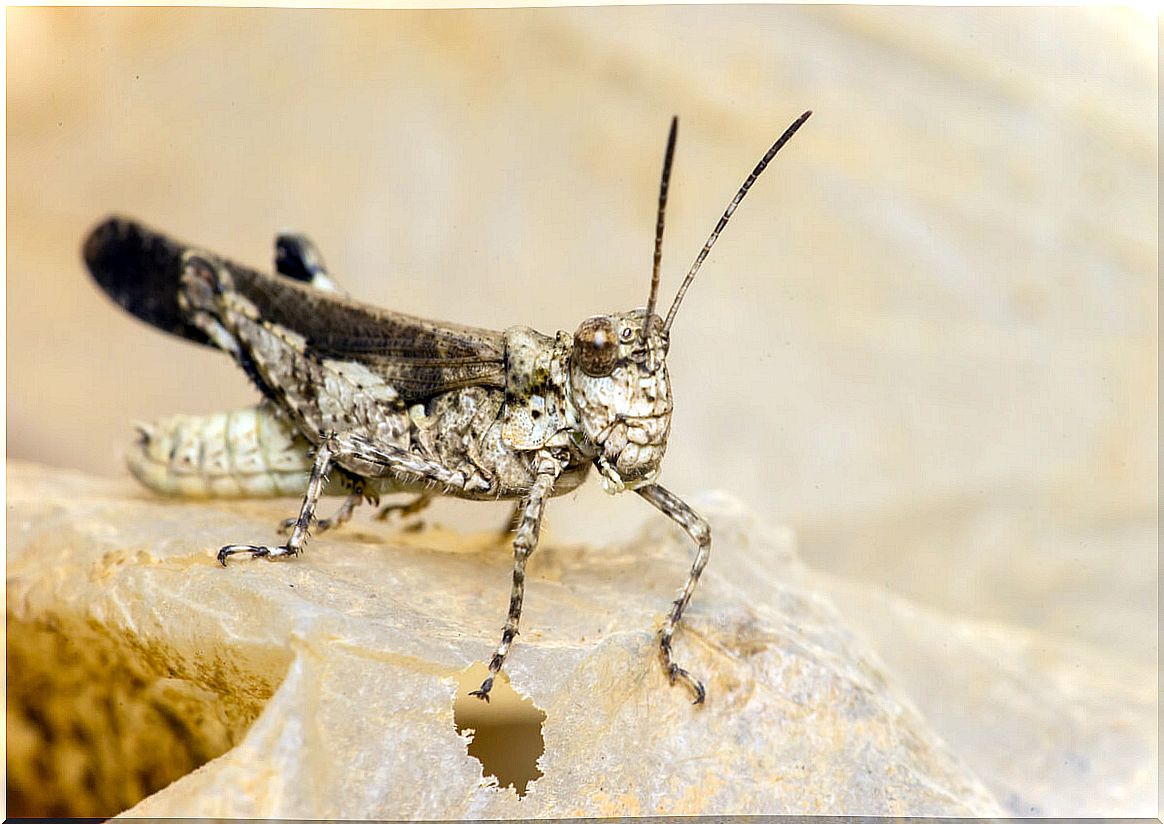
As we have seen, grasshoppers do not eat the first thing they find, as their diet is conditioned by multiple factors, both intrinsic and extrinsic. In the natural world, even the most trivial question has an underlying biological explanation. Grasshopper feeding is an evolutionary response to the environment.

